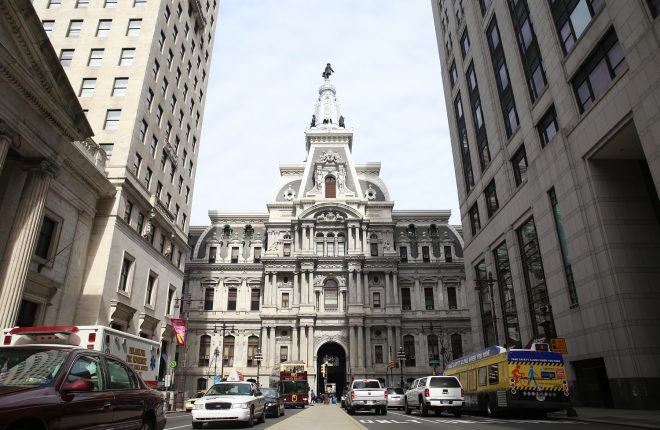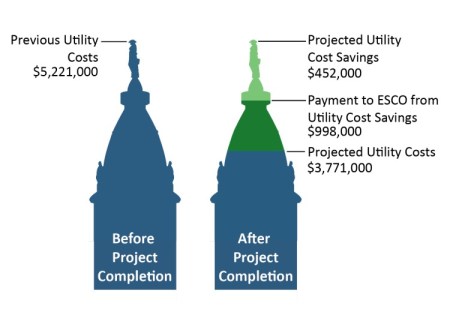
Yesterday, Director Christine Knapp provided testimony before the City Council Committee on the Environment to discuss the past, current, and future projects of the Office of Sustainability and to share Greenworks: A Vision for a Sustainable Philadelphia. Christine noted what we are prioritizing for the months ahead including climate resiliency audits, a Greenworks Equity Index, an Energy Master Plan, Solsmart Gold designation, and energy efficiency projects, just to name a few. With the potential for more energy efficiency projects on the horizon, we are revisiting a blog post from March, 2016 to highlight the Quadplex Guaranteed Energy Savings Act (GESA) Project, a project that is currently saving the City 1.45 million per year in energy costs and serves as a model for other initiatives.
The project, enabled by the Pennsylvania Guaranteed Energy Savings Act (GESA), uses the savings from increased building energy efficiency to pay for retrofits and other upgrades. Energy savings realized through a GESA project are allocated to project repayment, and the remaining savings can be used for other municipal programs.
City Hall, the Municipal Services Building, One Parkway Building, and the Criminal Justice Center — collectively referred to as the Quadplex — are among the City’s largest energy users and were selected based on their energy savings potential.
In late 2009, the City selected the energy service company Noresco to complete an energy audit, develop energy conservation measures (ECMs), and to manage implementation. The City chose high payback energy conservation measures that produced a project with positive cash flow, strong environmental benefits, and improvements to tenant spaces. This work resulted in facilities that are easier to operate and more comfortable for workers and visitors.
Many of the upgrades are invisible to building users. These include improvements to boilers, steam pipe insulation, and HVAC drives and filters. In addition, the City has adopted new building control systems. These systems include web-based software that allows city staff to remotely monitor and manage HVAC systems in real time. Increased capacity to control HVAC is particularly important because building heating and cooling account for between 50-60% of Quadplex building energy use.
Some of the Quadplex upgrades are more visible to building users, such as the installation of low-flow water fixtures. Visitors to City Hall who look up while in the main building entrance vestibules can now see new LED lighting.
The results of the Quadplex GESA Project thus far are overwhelmingly positive. The City saved approximately $2 million in utility costs during the construction phase and received over a $1 million in rebates for the project. Going forward, the City expects an annual cost savings of about $1.45 million. All bonds used to fund the project will be completely paid for in 15 years.
Originally posted on March 17th, 2016
 For more information on the Quadplex project, you can check out our Quadplex case study. Have questions, comments, or ideas for energy efficiency in Philadelphia? Send us an email at sustainability@phila.gov.
For more information on the Quadplex project, you can check out our Quadplex case study. Have questions, comments, or ideas for energy efficiency in Philadelphia? Send us an email at sustainability@phila.gov.
